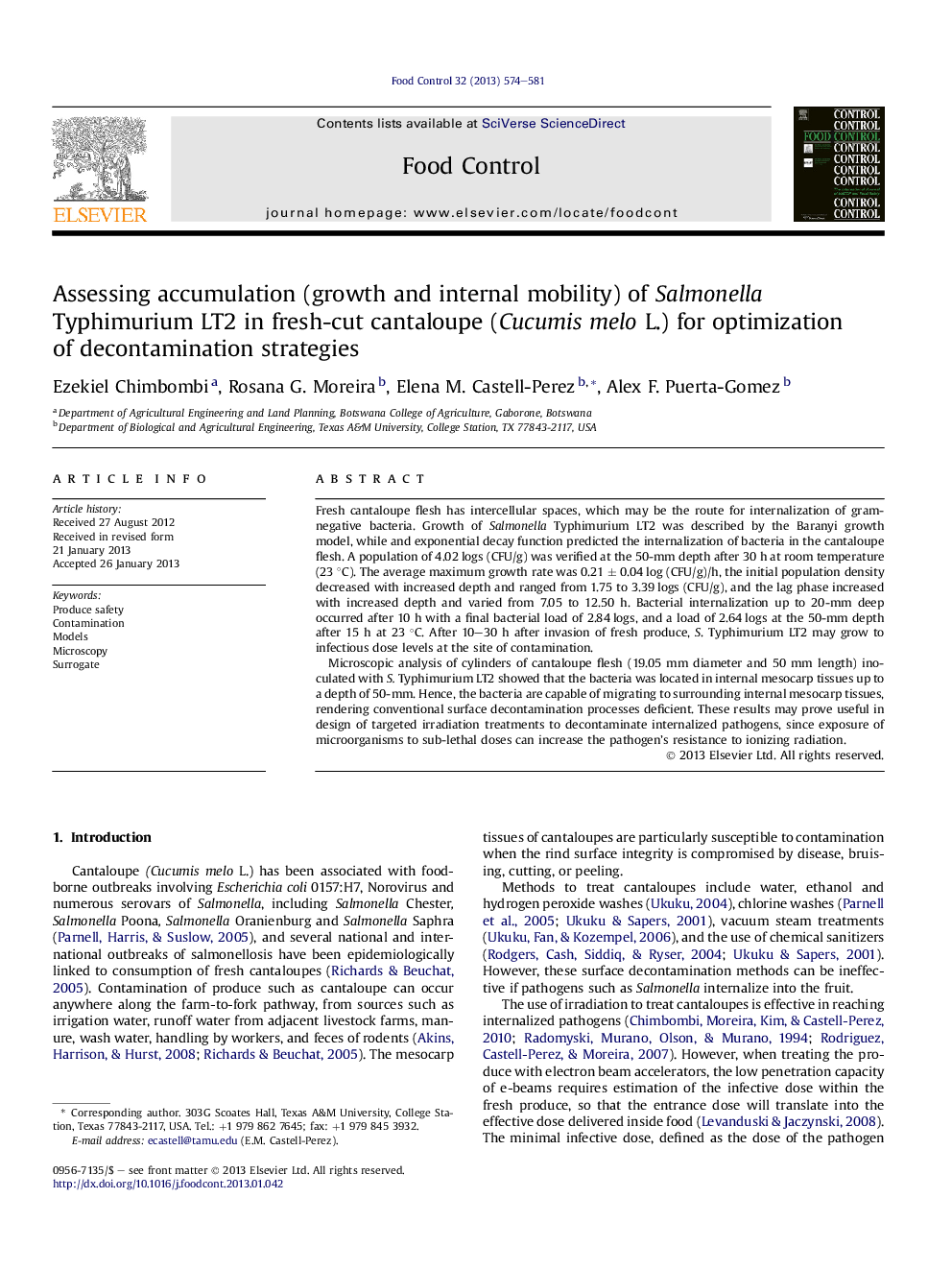| کد مقاله | کد نشریه | سال انتشار | مقاله انگلیسی | نسخه تمام متن |
|---|---|---|---|---|
| 4559407 | 1330439 | 2013 | 8 صفحه PDF | دانلود رایگان |

Fresh cantaloupe flesh has intercellular spaces, which may be the route for internalization of gram-negative bacteria. Growth of Salmonella Typhimurium LT2 was described by the Baranyi growth model, while and exponential decay function predicted the internalization of bacteria in the cantaloupe flesh. A population of 4.02 logs (CFU/g) was verified at the 50-mm depth after 30 h at room temperature (23 °C). The average maximum growth rate was 0.21 ± 0.04 log (CFU/g)/h, the initial population density decreased with increased depth and ranged from 1.75 to 3.39 logs (CFU/g), and the lag phase increased with increased depth and varied from 7.05 to 12.50 h. Bacterial internalization up to 20-mm deep occurred after 10 h with a final bacterial load of 2.84 logs, and a load of 2.64 logs at the 50-mm depth after 15 h at 23 °C. After 10–30 h after invasion of fresh produce, S. Typhimurium LT2 may grow to infectious dose levels at the site of contamination.Microscopic analysis of cylinders of cantaloupe flesh (19.05 mm diameter and 50 mm length) inoculated with S. Typhimurium LT2 showed that the bacteria was located in internal mesocarp tissues up to a depth of 50-mm. Hence, the bacteria are capable of migrating to surrounding internal mesocarp tissues, rendering conventional surface decontamination processes deficient. These results may prove useful in design of targeted irradiation treatments to decontaminate internalized pathogens, since exposure of microorganisms to sub-lethal doses can increase the pathogen's resistance to ionizing radiation.
► Salmonella Typhimurium migrate to surrounding internal mesocarp tissues through intercellular spaces.
► The Baranyi model predicted the growth kinetics of S. Typhimurium in fresh-cut cantaloupe flesh at room temperature very well.
► Ten hours at room temperature would be sufficient for the bacteria to internalize the produce (20 mm penetration depth).
► Internationalization levels confirm the need to address pathogen internalization when using electron beam irradiation.
Journal: Food Control - Volume 32, Issue 2, August 2013, Pages 574–581